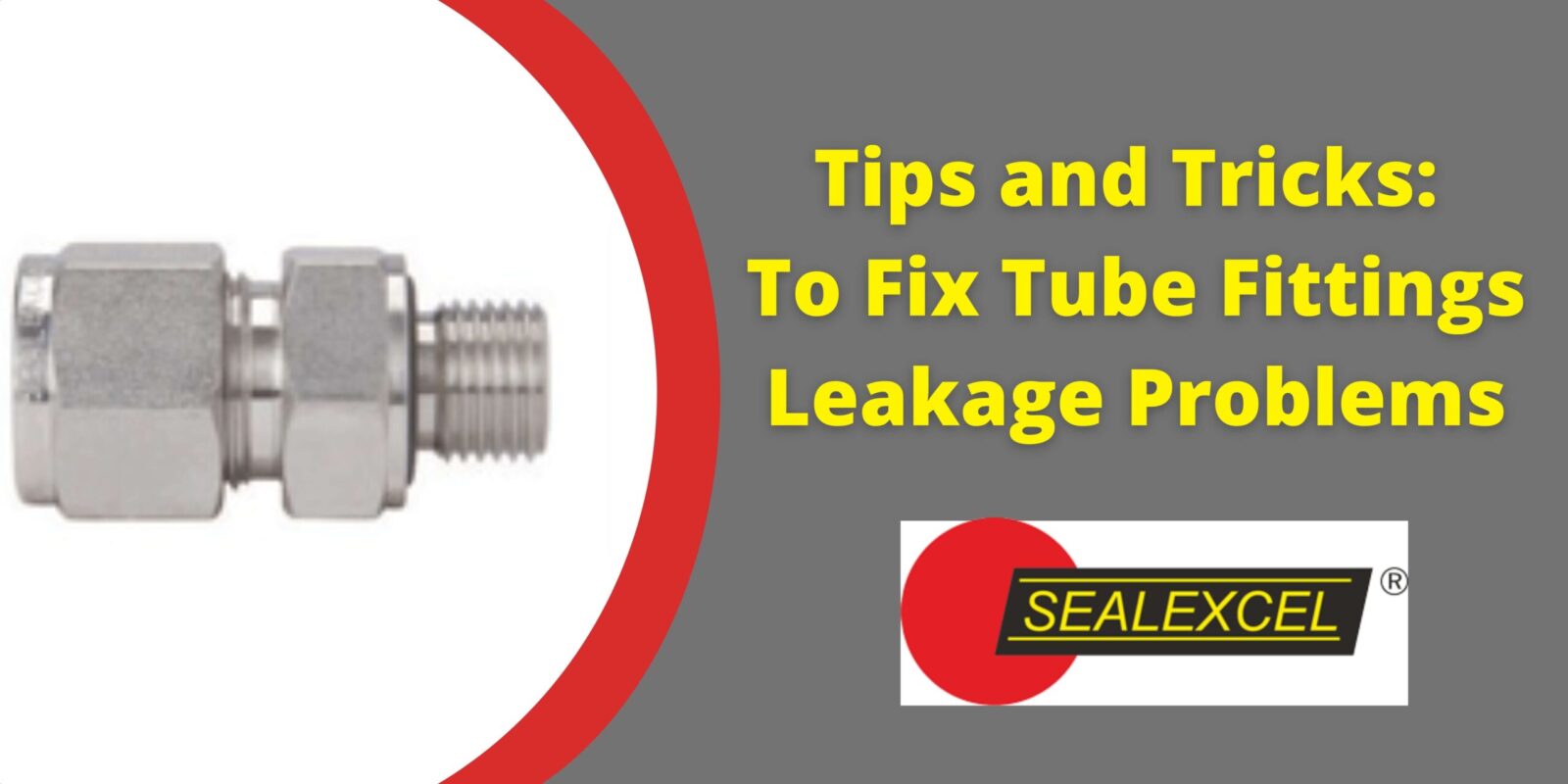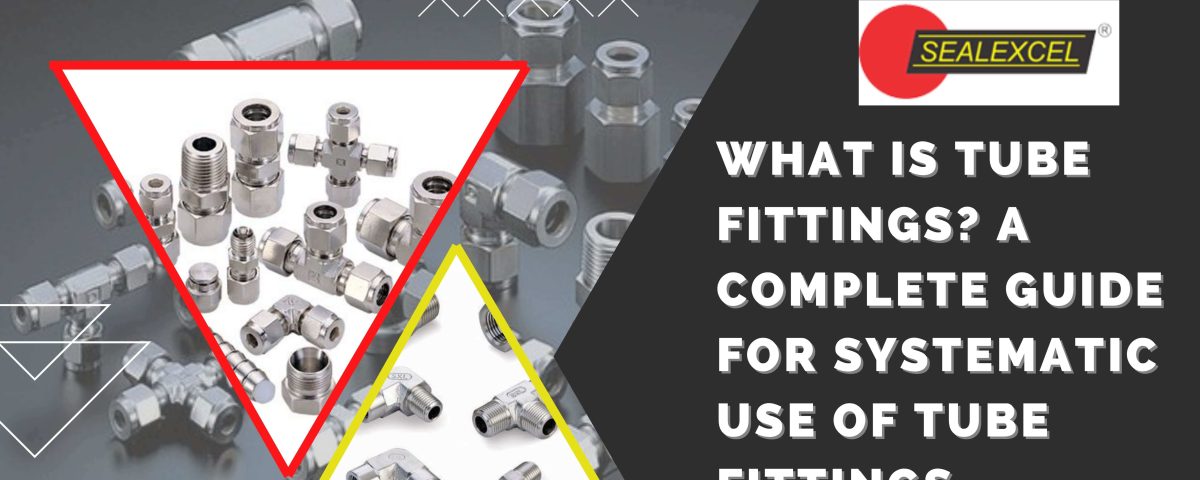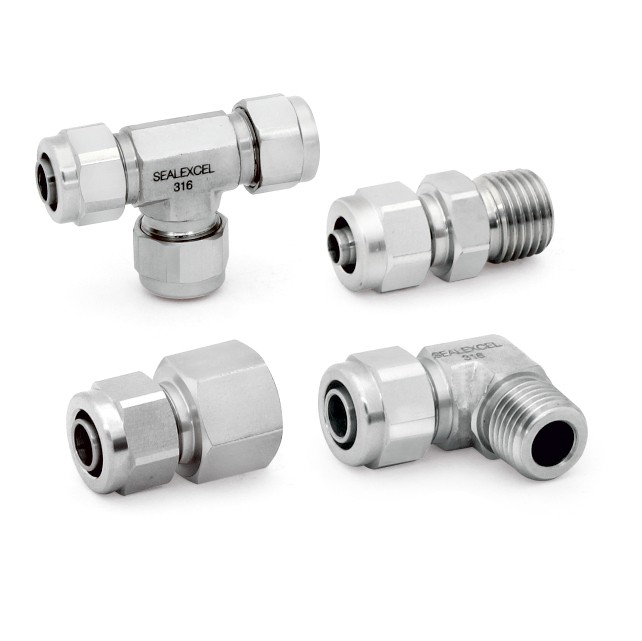
Tube Fittings for Both Instrumentation and Industrial Applications
February 2, 2022
Tips and Tricks: To Fix Tube Fittings Leakage Problems
August 3, 2022Tube fittings link tubing runs to other tubing sections, pipes, hoses, or other parts in in-line, offset, multi-port, and mounting configurations. Straight sections joined by fittings or specially crafted connections, and joints make up the majority of system configurations.
What are Tube Fittings?
You will almost certainly need to use tubing rather than a pipe if you ever want to connect your instrumentation to your process. You will need to use a tube fitting, a type of compression fitting, to join your process piping to your tubing.
How well-versed are you in these crucial elements? Learn how tube fittings function and how to maximize their use in your system.
Basics Of Tube Fittings
A body, a front ferrule, a back ferrule, and a nut make up a tube fitting. When a traditional two-ferrule tube fitting is “made up,” or tightened, the front ferrule is intended to advance into the fitting’s body. The process seal between the body and the tubing is created in this way. The rear or back ferrule, which is smaller, is made to “bite” into the tubing and stabilize the connection as a whole. A single ferrule serves as both the front and rear ferrules in a 2-ferrule fitting in single ferrule fittings, which are constructed slightly differently. Soon, we’ll go into greater detail about these.
To accommodate different piping configurations, the body of the tube fitting can have a variety of end connections.
Utilization of Tube Fittings
Pipe is used to build most of the main fluid lines in any processing facility. Using only piping components can be expensive and result in multiple leak paths when any mechanical or electrical measuring device is connected to the process. Tubing serves this purpose.
The use of tubing offers a technician several benefits over piping parts alone. Tubing can be bent to place equipment at precise locations or to make a connection to a tap that may be hard to reach. Utilizing a tube fitting, tubing can be quickly and easily cut to the precise lengths needed and connected to other piping or devices. 316SS is a common tubing material for construction.
Tube Prepare
Make sure the tube is correctly prepared before installing a tube fitting. To start, be sure to choose tubing that complies with the wall thickness and hardness requirements of the tube fitting. Always check with your manufacturer to ensure that your tubing is approved to function with the tube fitting you’re using. Check your tubing to make sure it is clean and has no surface deformation or scoring. When operating at high pressures, even minor irregularities in the tubing surface can jeopardise your fluid network’s integrity. Next, check to see that the tubing was cut evenly and squarely and that it had been properly deburred. You are now prepared to install your tubing once this is finished.
Instructions for Installing a Standard Tube Fitting
- It’s interesting to note that the installation instructions used by nearly all of the top tube fitting brands are the same.
- Till the tubing bottoms out on the fitting shoulder, please insert it into the fitting.
- The shoulder is a stopping point inside the fitting body and to ensure that the ferrules have enough biting surface on the tubing for a solid connection, bottom the tubing out against the shoulder.
- By hand, tighten the fitting nut until it is hand-tight.
- Mark the fitting nut and body at the hour of six using a marker.
The advantages of tube fittings
- Zero Leaks
- Reusable Features
- Properties That Resist Corrosion
- Resistance to High-Pressure Vibration and Vacuum Conditions
- Suitable Design
- Proven Widespread Industry Use
- Additional Service Life
- Appropriateness for All Processes
For more information on Tube Fittings, you can contact SEAL EXCEL today, as our fittings are made with utmost care and vigilance.




